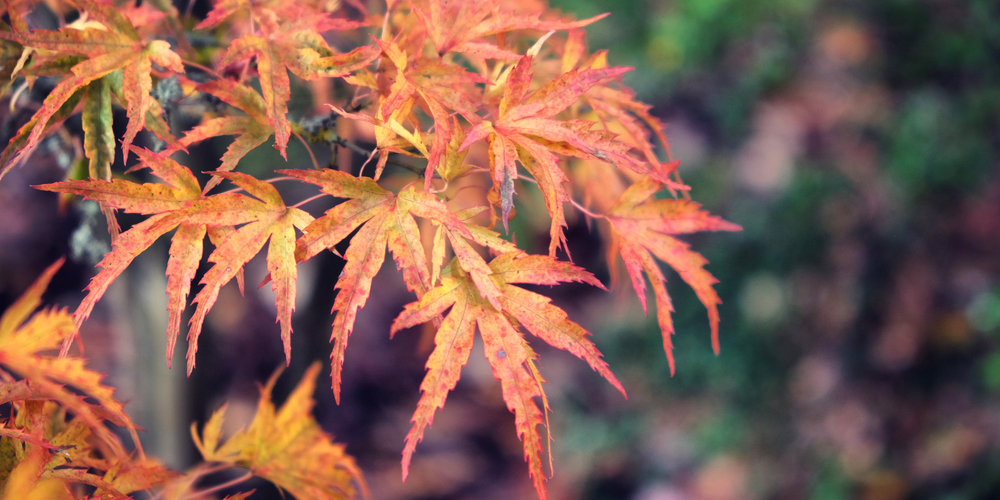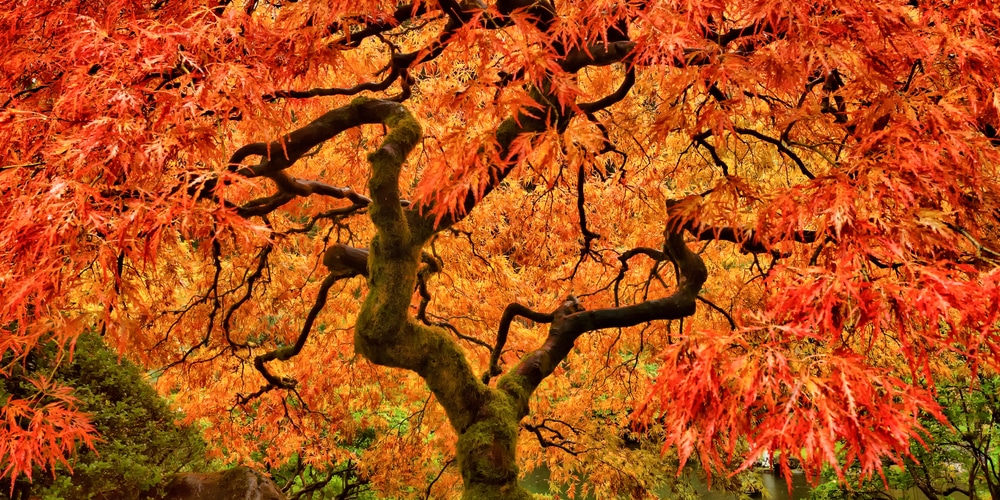Maple trees are an excellent choice if you’re looking for a landscape specimen. The way they provide shade makes them viable options in yards and gardens.
One thing you should know before planting maple is that the roots are very vigorous, and therefore can disrupt home structures and underground pipes.
Up above, taller maple varieties can tangle with power lines and roofs, which means you shouldn’t put maple trees right beside your property to avoid the trouble of having japanese maple roots near house.
So the question remains, ‘How Near Your House Can Japanese Maple Roots Get? or How close to my home can I plant a Japanese Maple tree?’
How Close to a House Can I Plant Japanese Maple?

When we hear maple trees we tend to imagine huge, sprawling specimens, with thick branches and foliage that spreads far and wide. While some maple varieties fit the description, there are some, like the Japanese Maple, that tend to grow smaller.
Japanese Maple roots are far more well-behaved compared to their stately counterparts. Large varieties, such as red or sugar maple will need to be around 30 feet away from a house or structure, while those that have invasive roots such as Norway and silver maple will need at least a hundred feet of distance to not pose a problem in the future.
The answer to how close to your house you can plant a Japanese Maple is around 10 feet as a minimum. Japanese maple is the smallest type of maple, and they provide excellent shade around patios and outdoor areas. In addition, the roots are shallow and relatively tame and the tree’s maximum height is only 30 feet tall.
Japanese Maple isn’t likely to be invasive, but it’s generally recommended that you plant trees with the protection of your property in mind. This means that you shouldn’t plant Japanese Maple under power lines, near fences, swimming pools, and known sewer lines or septic tanks.
Do Japanese Maples Have Big Roots?
In general, the bigger the maple tree species the farther its roots spread up and down. Red maple and sugar maple will have extensive root systems that can reach up to three times their size.
Also, maples tend to have a spreading growth pattern than a downward one. Silver, red, sugar, and Norway maple can send down roots that reach 20 feet in depth; in comparison, Japanese Maple only goes about 3 feet deep and 12 feet wide.
It’s worth noting that maple roots aren’t particularly destructive since most of the roots are thin and fibrous. However, the tree species can cause significant damage when placed directly above underground structures and home foundations.
Tips on Planting a Japanese Maple Close to Your House
Location Matters
Before investing and planting a tree such as Japanese Maple, it’s best to have a good idea of where you want to plant it first. You can grow Japanese Maple either as a decorative specimen or for functional purposes, e.g., shade, near an air conditioner, etc.
Your Japanese Maple can be planted to provide shade for people during hot summer days or to lower energy costs. On the other hand, you may want to show off the tree and its beautiful foliage and spreading habit.
Regardless of the reason, you’ll definitely want to meet its growing requirements and give it plenty of sunlight.
Think Big
It may be difficult to imagine, but it’s important to envision your Japanese Maple growing to its maximum height (30 feet) as you consider where it will be planted in your yard.
Remember, a mature Japanese Maple specimen can grow up to 30 feet tall and have a 20-feet spread. Keep this in mind when choosing the tree’s final location and preparing the soil for transplanting.
Proper Care is Essential
Japanese Maple owners should not only think about the distance to the house but also the growing requirements so the tree can grow beautifully and without problems.
Acer palmatum will want protection from the hot afternoon sun and protection from strong wind, as well as a well-drained and rich soil that’s consistently moist. The tree requires plentiful watering in its early years so it won’t be stunted and protection from hard frosts during the winter season.
How Near Your House Can Japanese Maple Roots Get?: Conclusion
Do all of these things and your Japanese Maple can live for a long time and bring breathtaking landscape beauty to your yard or garden.
Related Article: How Do You Plant a Japanese Maple in Clay Soil

